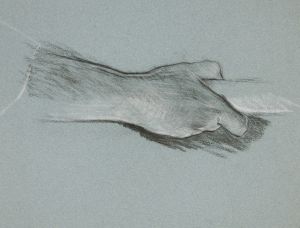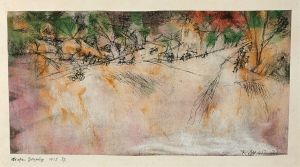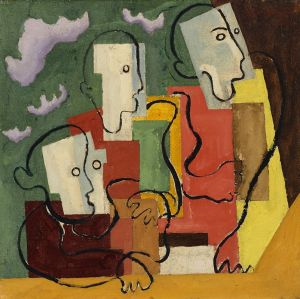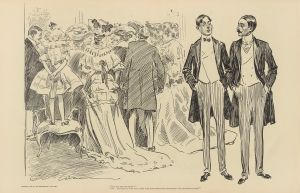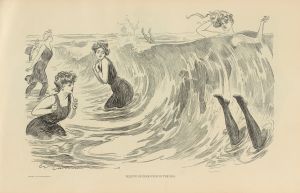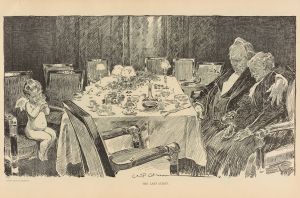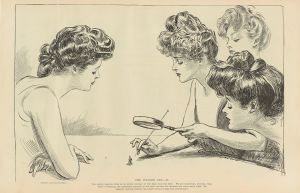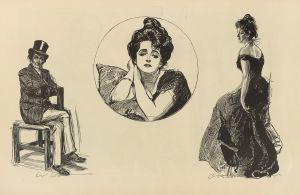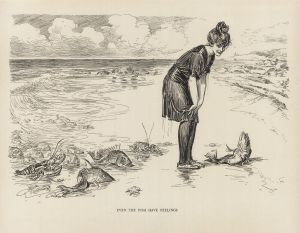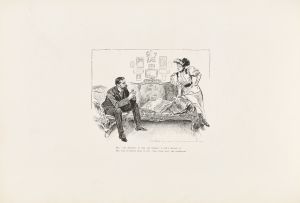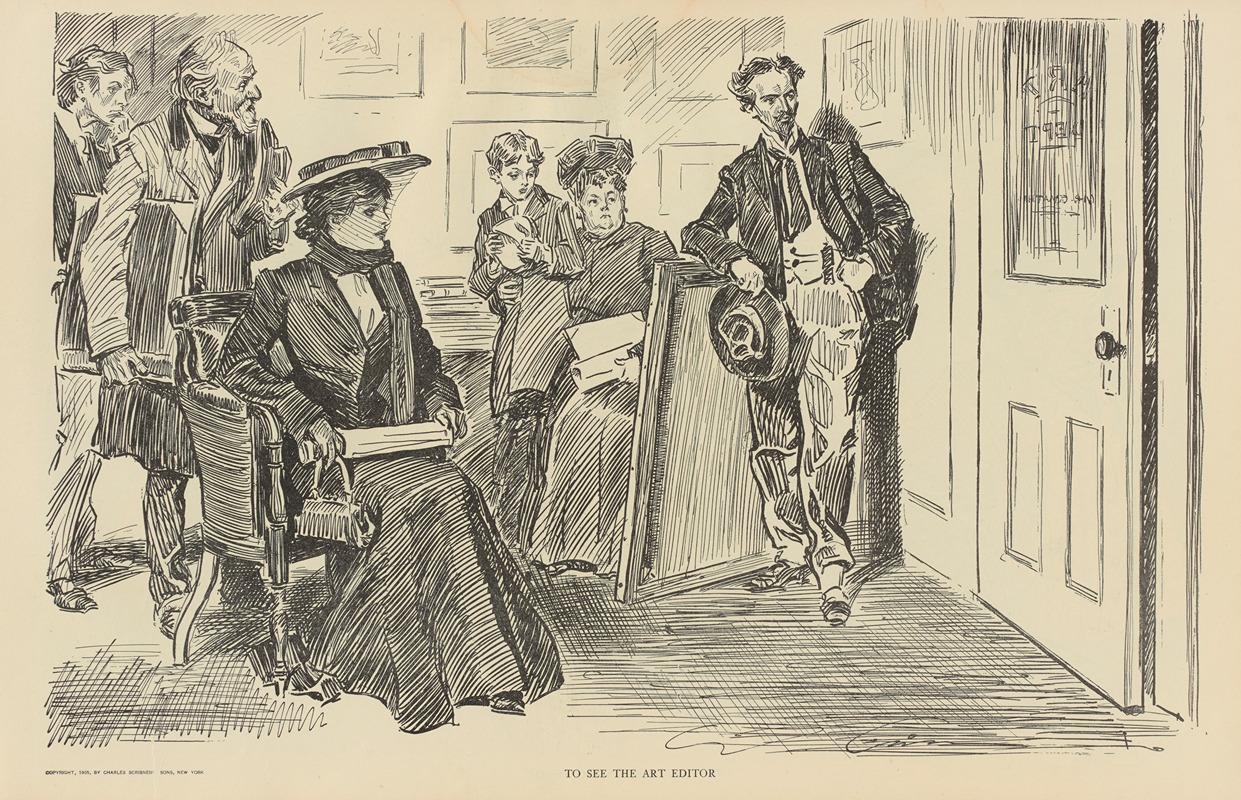
To see the art editor
A hand-painted replica of Charles Dana Gibson’s masterpiece To see the art editor, meticulously crafted by professional artists to capture the true essence of the original. Each piece is created with museum-quality canvas and rare mineral pigments, carefully painted by experienced artists with delicate brushstrokes and rich, layered colors to perfectly recreate the texture of the original artwork. Unlike machine-printed reproductions, this hand-painted version brings the painting to life, infused with the artist’s emotions and skill in every stroke. Whether for personal collection or home decoration, it instantly elevates the artistic atmosphere of any space.
Charles Dana Gibson was an influential American illustrator, best known for creating the iconic "Gibson Girl," a representation of the idealized American woman at the turn of the 20th century. His work was widely published in magazines such as Life, Harper's Weekly, and Scribner's, and he became one of the most celebrated illustrators of his time.
"To See the Art Editor" is one of Gibson's lesser-known works, but it reflects his keen eye for social commentary and his ability to capture the nuances of human interaction. Created during a period when illustration was a primary medium for visual storytelling in print media, this piece exemplifies Gibson's skill in using pen and ink to convey detailed and expressive scenes.
The illustration likely depicts a scene involving an art editor, a role that was crucial in the publishing industry, especially in the context of magazines and newspapers that relied heavily on visual content. Art editors were responsible for selecting and commissioning artwork, working closely with illustrators like Gibson to ensure that the visual elements complemented the written content. This interaction between artists and editors was a significant aspect of the publishing process, and Gibson's work often highlighted the dynamics of such professional relationships.
Gibson's illustrations were characterized by their intricate line work and the ability to convey a narrative through a single image. His attention to detail and his talent for capturing the subtleties of expression and posture made his characters relatable and engaging. In "To See the Art Editor," these qualities would be evident in the way he portrays the individuals involved, possibly highlighting the tension, anticipation, or camaraderie that might exist in such a professional setting.
The era in which Gibson worked was marked by significant changes in society, including shifts in gender roles and the rise of consumer culture. His illustrations often reflected these changes, providing commentary on the evolving social landscape. While "To See the Art Editor" may not be as widely recognized as his "Gibson Girl" series, it nonetheless contributes to the understanding of the period's cultural and professional milieu.
Gibson's legacy as an illustrator is significant, as he helped define the visual culture of his time. His work remains a valuable resource for understanding the social and cultural dynamics of the late 19th and early 20th centuries. "To See the Art Editor," like many of his other works, offers insight into the world of publishing and the role of illustration in shaping public perception and engagement with media.






